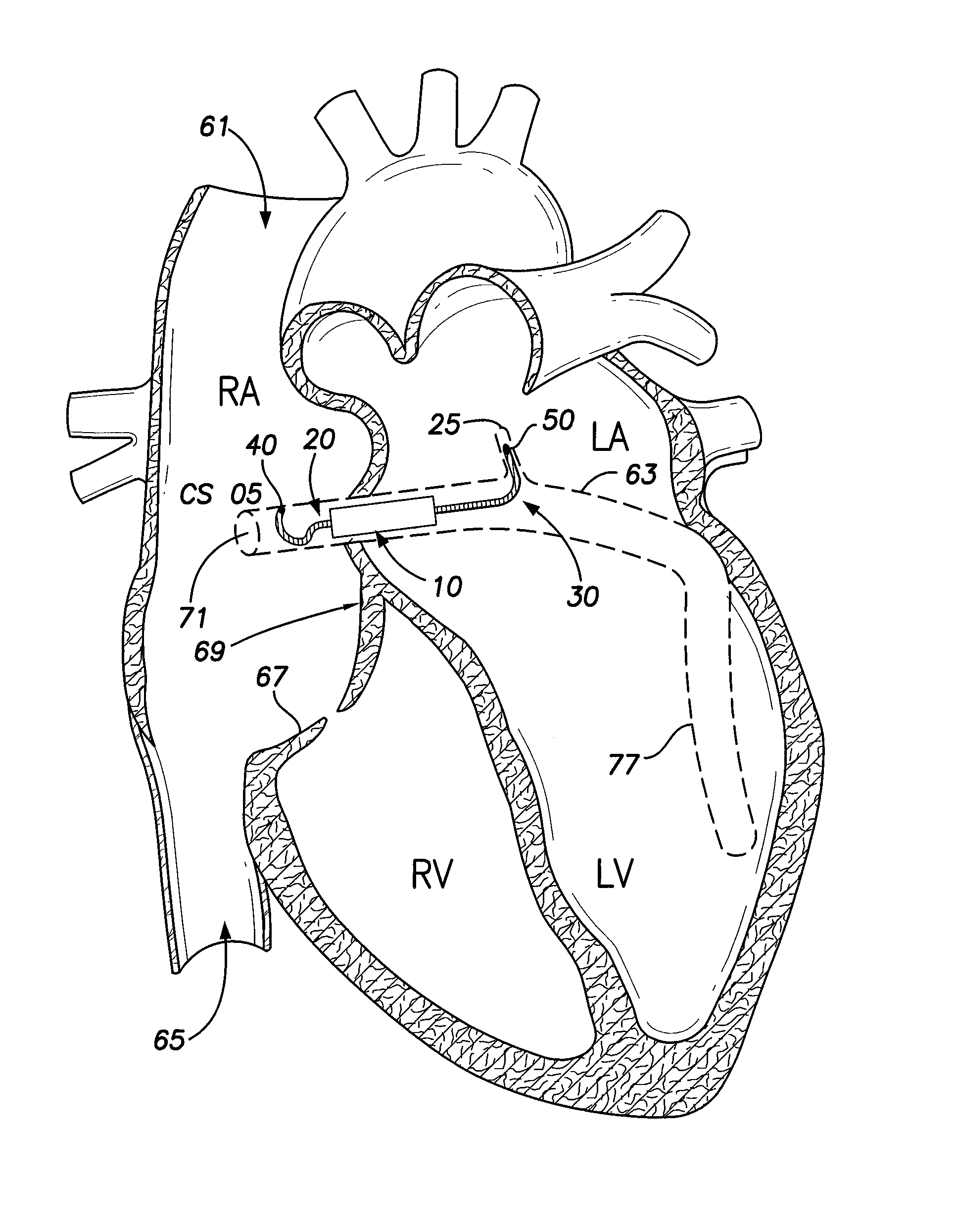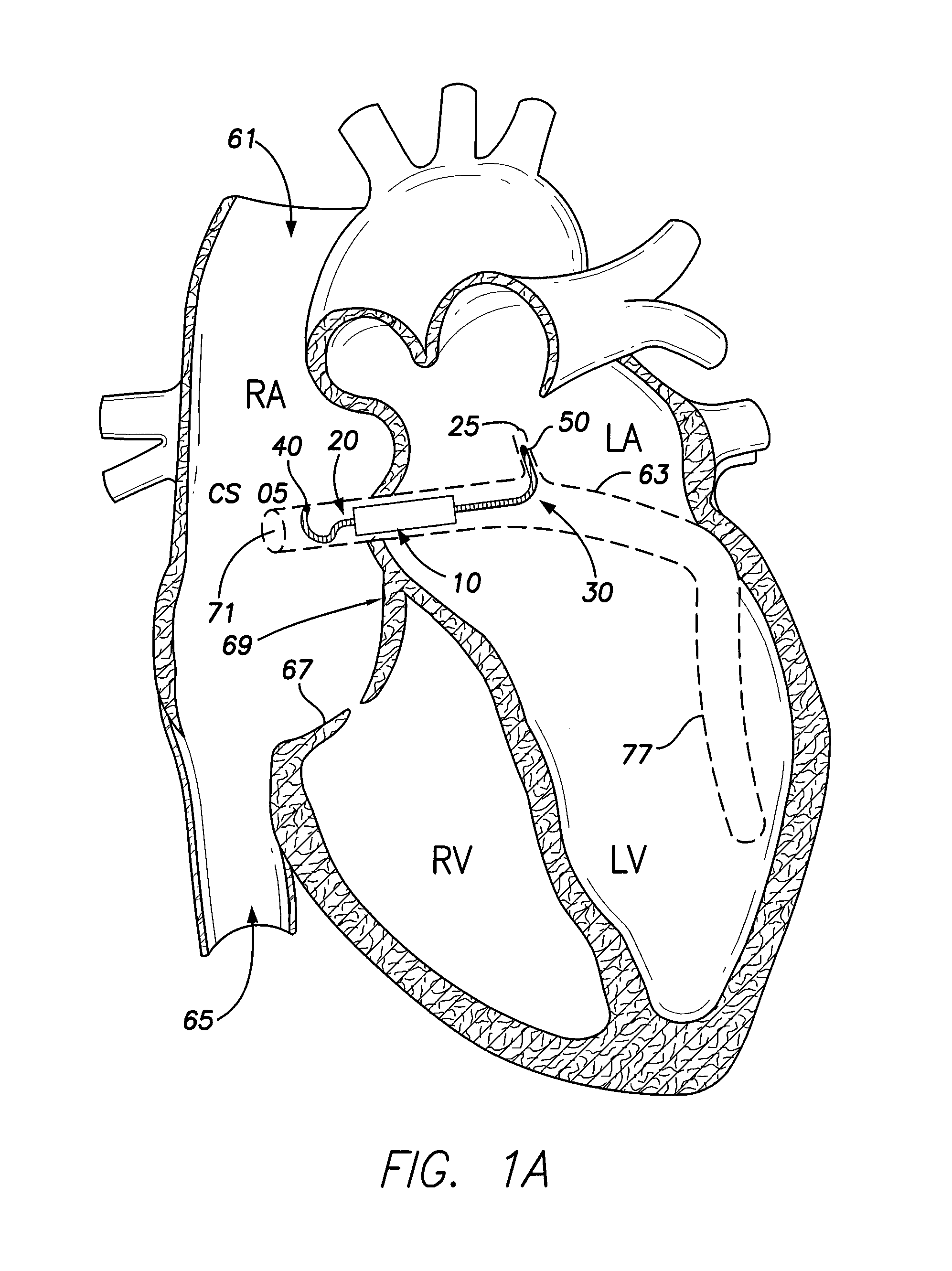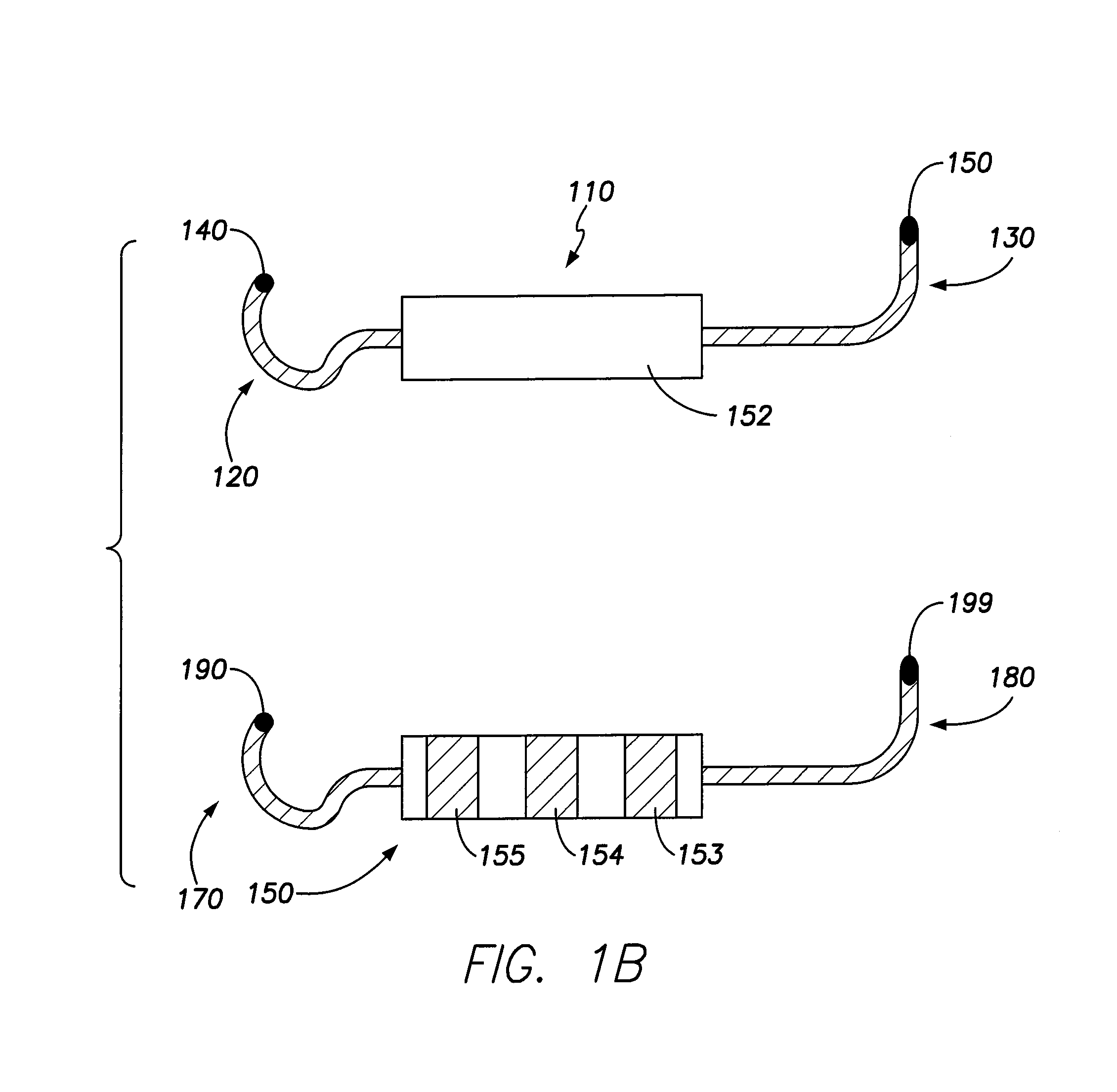Intracardiac implantable medical device for biatrial and/or left heart pacing and method of implanting same
a technology of implantable medical devices and left heart, which is applied in the direction of internal electrodes, transvascular endocardial electrodes, therapy, etc., can solve the problems of requiring multiple leads, unable to pace/sensing the pacemaker with left ventricle (lv) capability, and experiencing certain limitations
- Summary
- Abstract
- Description
- Claims
- Application Information
AI Technical Summary
Benefits of technology
Problems solved by technology
Method used
Image
Examples
Embodiment Construction
[0032]FIG. 1A illustrates a side view of the chambers of the heart including the right atrium (RA), left atrium (LA), right ventricle (RV) and left ventricle (LV). FIG. 1A further illustrates the coronary sinus (CS) and the ostium (OS) of the CS. An intracardiac implantable medical device (IIMD) 10 is illustrated to be implanted within the coronary sinus. The IIMD 10 may have been placed through the superior vena cava (SVC) or inferior vena cava (IVC) into the right atrium of the heart. As shown in FIG. 1A, the right atrium wall includes the superior vena cava inlet 61, coronary sinus 63, IVC inlet 65, tricuspid valve 67, and the ventricular vestibule (VV) region 69. The ostium 71 represents the juncture of the coronary sinus 63 and the RA. The coronary sinus branches into various tributary vessels such as the lateral veins, great cardiac vein, middle cardiac vein, small cardiac vein, anterior inter-ventricular veins and the like. In FIG. 1A, the lateral cardiac vein 77 and vein of ...
PUM
 Login to View More
Login to View More Abstract
Description
Claims
Application Information
 Login to View More
Login to View More - R&D
- Intellectual Property
- Life Sciences
- Materials
- Tech Scout
- Unparalleled Data Quality
- Higher Quality Content
- 60% Fewer Hallucinations
Browse by: Latest US Patents, China's latest patents, Technical Efficacy Thesaurus, Application Domain, Technology Topic, Popular Technical Reports.
© 2025 PatSnap. All rights reserved.Legal|Privacy policy|Modern Slavery Act Transparency Statement|Sitemap|About US| Contact US: help@patsnap.com



